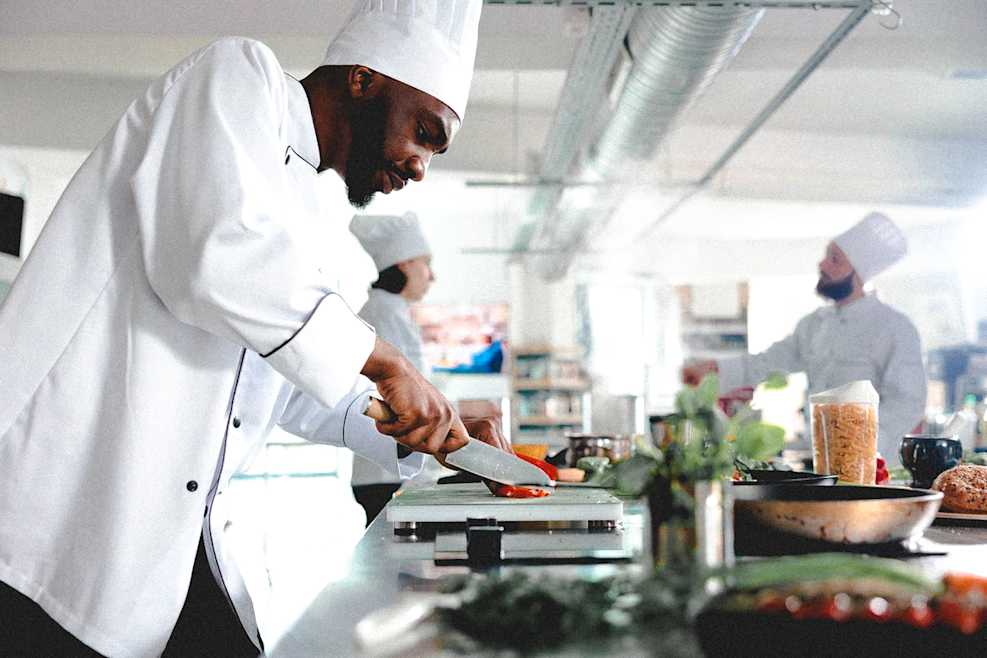How Restaurants Can Navigate Food Inflation In 2023

Inflation is everywhere. Across all sectors of the economy, businesses and consumers are witnessing the effects of rising prices around the country. Consumer prices increased by 9.1 percent from June 2021 to June 2022, the largest increase in 40 years. And we're not out of the woods yet; food-away-from-home prices are expected to increase by around eight percent in 2023.
As a restaurant owner, it’s important to be aware of food inflation. In this blog, we’ll examine the impacts of inflation on restaurants and what you can do to ensure your business remains profitable in the long run.
How Inflation is Affecting Restaurants
In today’s economic uncertainty, some restaurants are struggling to keep their businesses afloat against rising inflation rates. With the US inflation rate hovering at 6.5 percent as of December 2022, navigating cost-related challenges has put a strain on hospitality businesses hoping to remain competitive in the marketplace. When it comes to food, the effects are similar.
The prices for daily items such as eggs, milk, beef, and fresh fruit have risen due to inflation. So what exactly is causing food inflation in 2023? To answer that question, we need to examine the following factors:
Labor shortages: A lack of employees in the service industry has led to increased food prices and wages. The result: restaurants are struggling to provide the same level of service to their customers.
Effects of the pandemic: The COVID-19 pandemic resulted in several disruptions to the economic sector, including supply chains. Because of these delays, manufacturers, farmers, and businesses aren’t receiving their products on time. These disruptions have also led to higher transportation costs.
Severe weather disruptions: Climate-related factors are also influencing the price of food items. For example, worsening droughts are damaging crops and impacting the quality of produce. Farmers and manufacturers are seeing a supply shortage of high-quality produce items.
Government conflicts: While this factor is complex, it’s worth mentioning. Ongoing national conflicts can limit the exportation of products and even drive up prices for items such as wheat, cereal, and bakery goods.
Avian flu: The culprit behind egg prices almost quadrupling this January compared to last.
With so many variables to examine, it’s difficult to pinpoint just one cause of food inflation. Some of these factors are manageable, while others aren’t as easy to address. Some restaurants are responding by increasing their menu prices. However, it’s best to do so cautiously, as this can discourage customers from visiting your establishment. In the next section, we’ll take a look at some alternative strategies for combating food inflation in 2023.
Five Strategies for Combating Food Inflation
There’s no easy solution to combating rising food prices, but these five strategies can help keep your restaurant running in a competitive economic landscape.
Develop a proper inventory system
An inventory system can help you identify cost-related expenditures impacting your restaurant’s profit margins. Consider opting for a management system that automates crucial calculations so you can pinpoint the most influential factors in your business’s performance. You can examine the cost of goods, supplies needed, and the most popular orders.
Cut down on food waste
While it may sound hard to believe, reducing food waste is an effective strategy for combating increased food prices. To run a profitable restaurant, most owners maintain their food costs between 28 and 35 percent of revenue. Consider conducting a trash audit to examine what food your business is wasting. Use your insights to implement the necessary changes needed to avoid profit loss.
Opt for more affordable ingredients
Examine the most expensive ingredients on your menu and see if you can switch to more affordable alternatives. This simple yet effective strategy can help your business gain higher profit margins. Best of all, you don’t have to redo your menu to save costs. The key is to swap expensive ingredients for something less expensive while maintaining the quality of your dishes.
Optimize your menu
Take a look at your menu items to see which dishes are bringing in the most sales and which ones are draining your profits. A good strategy involves promoting popular items that are generating large profits for your business while getting rid of unpopular dishes that are costing you money. Alternatively, you can promote these items as part of a weekly special.
Cut unnecessary expenses
Assess your costs and see where you can cut down on unnecessary expenditures. Just like the last strategy, you should look at expenses that add no value to your services. You should also consider removing items that you don’t use often.
Accelerate Your Business With Qwick
Combating food inflation in 2023 is an uphill battle. Economic disruptions, post-pandemic effects, and labor shortages all influence ongoing inflation. Here at Qwick, we can help make staffing shortages a thing of the past. After all, unfilled shifts can mean you’re leaving revenue on the table, or worse—burning out your own team that you rely on.
Tap into our network of experienced hospitality professionals across the country to fill open shifts at your business. Create an account, post open shifts, and get skilled staff. Unlike inflation, it really is that simple!